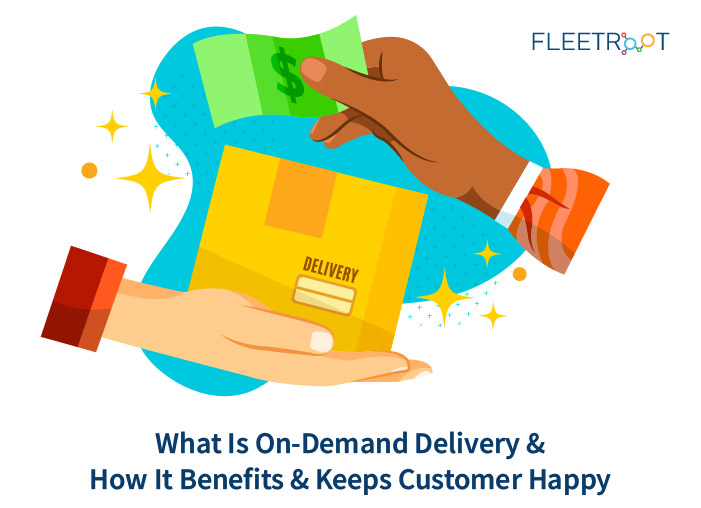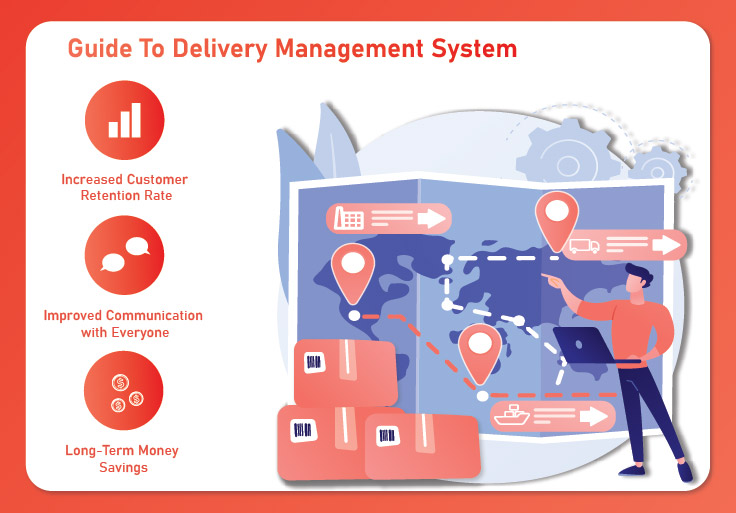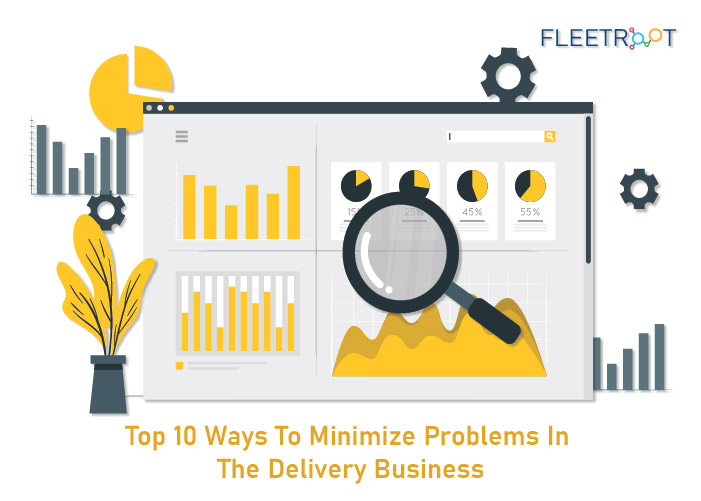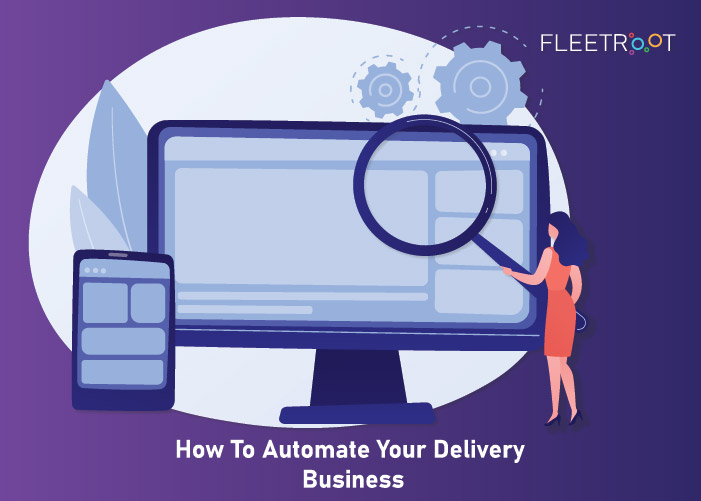Executive Summary
Driven by modern technology such as mobile tech, smartphones, online and app-led platforms, analytics, etc.
The 21st century brought about several fundamental changes in the way the world conducts business.
We now live in the age of the gig economy, instant consumer gratification, superb data analytics, and vastly improved distribution and logistics.
These elements have heralded a paradigm shift in consumer expectations around speed, cost, and convenience of delivery leading to an “on-demand economy”.
Consumers now know they can get what they want, at the cost they want, at the place they want!
Modern organizations now need to utilize all available modern tech and tools to supply their products “on-demand” to their customers – across price, location, and convenience.
It is not a “nice-to-have” feature for firms anymore but a “must-have” one. If you don’t give your customer On-demand delivery, your competitor will.
On-Demand Delivery – What Is It?
An On-Demand delivery system is a process through which companies use modern automation, software, online platforms, data analytics, mobile tech, and modern hardware to supply their goods to their consumers at the shortest possible time with several convenient options as demanded by their consumers.
50%+ Urban customers expect one-hour retail deliveries.
On-Demand Delivery – 7 Leading Benefits
1. Larger addressable markets: Due to depth and breadth of reach, On-Demand delivery enables firms to service vast markets across international borders that wouldn’t have been possible due to earlier limitations of traditional outlets and logistics.
2. Deep consumer insight: Due to modern processes, an On-Demand delivery system helps firms to understand consumers better and use this insight to predict demand patterns and be optimally prepared to fulfill such demand.
This also allows a greater SoW (share-of-wallet) through cross-selling, up-selling, AMCs (etc).
3. Manage Last-Mile Delivery: Smart organizations use modern distribution and logistics to provide customers with “customized” 24*7 delivery options that seamlessly fit into their hectic lives.
This builds a strong relationship with the customer and drives loyalty and repeat business.
4. Efficient automation: With the help of vastly improved hardware, MIS, software, logistics, data-analytics, on-demand cloud-computing (etc.), firms can automate and manage their entire order and fulfillment cycle with levels of efficiency that were unimaginable till recently.
This ensures shorter order-cycles that allow businesses to expand rapidly into new markets and manage them efficiently.
5. Reduced operating costs: On-demand delivery systems reduce investments needed for operating expenses, physical warehouses & stores while best utilizing the efficiencies of available human resources, online and App led-platforms.
Ultimately, this translates through to better pricing for the firm’s customers and keeps them competitive
Leading the change in consumer expectations are innovators like Google, Amazon, and Uber. For companies to retain customers in the On-Demand age, they have to match the service levels offered by these market pioneers.
On-Demand Delivery – 5 ways for firms to provide a successful experience
1) Provide enough options: Your customer must have enough options – delivery, pickup, costs, time of delivery, days needed, same-day options, collect from store (etc.). All this must also show up conveniently with associated costs at checkout.
2) Robust systems: To offer the entire gamut that is available as part of modern On-Demand delivery including various delivery windows – especially, the ‘2-hr’ and ‘same-day options’ that are customer favorites- your systems must be automated and fully coordinated.
From the point that an order is placed, to dispatch, movement down the distribution chain through to the end-customer.
3) Last-Mile Delivery visibility: Managing all this effectively, efficiently and within budget requires visibility through Last-Mile Delivery. That enables firms to optimally use available resources to meet On-Demand orders.
4) Automate for efficiency: Given the high standards of service and fulfillment that market innovators like Amazon and Uber have set, customers have become used to such service levels.
If you don’t meet their fulfillment demands, your competitors will. Therefore, you must automate your processes for maximum efficiency, and, use management to monitor effectively.
For example, a GPS-enabled fleet management system will establish optimal operating levels based on a company’s internal metrics eg. routing, stops, costs, load.
5) Omnichannel strategy: Adopting an omnichannel approach is imperative for running an efficient On-demand fulfillment model.
This allows firms to use the optimal mix of pickup, local delivery, retail collection, using local stock (etc.).
6) Stay connected 24*7: Efficient On-Demand systems always keep the customer at the center of its operations and send push notifications with real-time order updates ie order dispatch, progress, arrival, pickup ready for pickup, late deliveries (etc.). This prevents confusion for your customer.
7) Using modern tech eg fleet management software: Every aspect of an On-Demand system is important, not least its Last-Mile Delivery.
Using modern tools like GPS-enabled fleet management software that allows efficient scheduling and monitoring of your vehicles, drivers, and logistics empower firms to manage the scope and complexity of an On-Demand service.
70% Customers willing to pay more for faster deliveries.
On-Demand Delivery – 5 reasons for failure
The main cause for failure is because companies fail to grasp the complexity and scope of running an On-Demand delivery model.
1) Not customer-centric: To achieve success at scale, the entire on-demand delivery model must holistically place the customer at its epicenter.
Without this, it is impossible to run a successful On-Demand delivery model. Therefore, the starting point of a robust On-Demand model is for firms to ask themselves: is my customer at the center of my operation?
Unfortunately, the answer is often, ‘no’.
2) Disconnected business processes: Running a solid On-Demand delivery model necessitates a seamless 24*7 coordination across all aspects of an organization’s operations, processes, employees, and resources.
Only managing some parts of the whole will lead to disaster.
3) Re-imagining operations holistically: Often, companies will need to re-imagine their entire gamut of operations and create a seamless, unidirectional workflow.
These include team roles, goals, and responsibilities at the very top right down to last-mile operations and often need leadership to make difficult decisions about change.
Unfortunately, not everyone achieves this. And, then, you will be unable to achieve an efficient on-demand service.
4) Small delivery windows, large volumes, complex demand patterns: The main tenet of an On-Demand model is delivering high volumes to numerous locations within very short times.
Add “peak-hour” volumes to this equation and you have a complex, large-scale operation. Therefore, the entire operation needs to be planned and executed seamlessly, and, by using all available modern tools. Easier said than done.
60% Shoppers buy from companies that have better fulfillment services.
5) Insufficient Automation, prohibitive costs: An On-Demand service will face prohibitive costs if you do not automate your processes enough by using modern tech. Additionally, insufficient automation will also prevent the operation of the scale.
Automation & Modern Tech: the core of On-Demand Delivery
Simply put, the success of On-Demand models depends on how well organizations can use modern automation to manage their logistics and distribution around customers.
And, since Last-Mile Delivery is an invaluable part, leveraging modern transportation tech like GPS-enabled fleet tracking software will allow firms to manage their fleets in real-time from vantage command centers.
Conclusion: Never forget that the goal of On-Demand Delivery is Customer Satisfaction. In an age of widespread commoditization across categories, building customer loyalty comes from such services. Therefore, using the correct fulfillment strategies enables firms to build customer loyalty.




